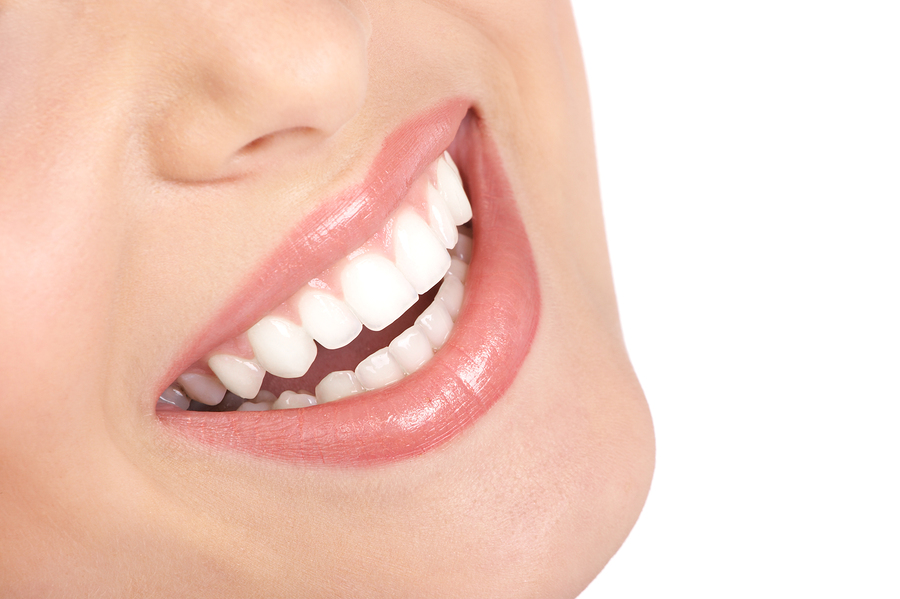- Make It Yourself Lavender Heart-Shaped Bath Bombs!
- 20 Things You Never Knew About “Down There”
- 12 Best Foods For Those Suffering From Arthritis Pain
- 12 Personal Hygiene Mistakes Almost Everyone Makes (Mom Never Told You About #4!)
- 15 Medicinal Plants And Herbs From The Cherokee People
- 12 Mind-Blowing Benefits Of Drinking Coconut Water During Pregnancy
- 12 Outstanding Winter Foods That Won’t Fatten You Up Like A Christmas Turkey
3 Cheap And Easy Ways To Whiten Your Teeth Naturally

Photo credit: bigstock.com
Everybody wants a nice set of Hollywood teeth. Modern cosmetic dentistry has made it possible to brighten any smile, and bright, white smiles have become increasingly popular around the world. The most common teeth whitening treatments make use of a chemical called chlorine dioxide. But in recent years the long term effects of whitening procedures have become more fully understood. In this article, we will look into some of the common dangers of traditional teeth whitening treatments and offer some safer and natural alternatives for getting a radiant and brilliant smile.
The enamel is the tough, glossy, translucent outermost layer that surrounds each tooth. It acts as a protective barrier for the more sensitive interior of the tooth. The tooth enamel is actually the hardest surface in the body, but it can be damaged, as most people know, by failing to properly care for the teeth and by consuming acidic and sugary foods. With the prevalence of unhealthy foods rich in sugar these days, it is no surprise that tooth enamel erosion has become more common.
Some drinks, such as coffee, tea, and wine can also discolor the enamel, giving teeth a duller or even yellowish hue. Cigarette smoking can also discolor tooth enamel, and it is precisely this that may cause people to seek whitening treatments in the first place.
This is why it may seem surprising that tooth enamel erosion occurs in people who undergo whitening treatments. Such individuals are generally the type of people who take protecting their teeth more seriously, so how could this be happening to them?
The truth is that conventional, chlorine dioxide-based treatments have been shown to seriously weaken, and in some cases, completely destroy the enamel of teeth. Many people get professional whitening treatments performed on their teeth a few times a year, while others use at-home treatments. There is no question that conventional treatments based on the use of chlorine dioxide work, or they would not be as popular as they are. But more and more people are beginning to see the damaging effects of these treatments, especially if they are self-administered at home.
A weakened or nonexistent enamel leaves the tooth raw and exposed, greatly increasing the likelihood of cavities, tooth fracture, and irritated gums. It is also important to keep in mind that teeth and the enamel that protects them are not like normal bones. Most of the bones in the body will heal after a fracture, but once a tooth is chipped, it will never grow back to its original shape. Likewise, the enamel does not grow back either — once it is worn away, it is gone for good.
It is ironic that those seeking a more beautiful smile are actually weakening their teeth and increasingly the likelihood of decay fracture and decay. So what is the solution for those who want to get rid stains on their teeth without weakening them? These are the best alternatives for teeth whitening!
1. Baking Soda
This is one of the most time-tested methods for whitening, and is extremely economical compared to getting a chlorine dioxide-based treatment. You’ve probably seen toothpaste boxes stating that the product contains baking soda. Baking soda has long been used as an alternate toothpaste in its own right, but did you know that you can use it to whiten your teeth as well?
Simply blend a pinch of baking soda with water (preferably purified water), and apply it to your toothbrush. Use this to brush your teeth, and it will help wash away stains on your tooth’s enamel layers without damaging them. Baking soda has an additional benefit in that it reduces acidity in the mouth and raises alkalinity, protecting the enamel even more.
Continue to Page 2

Photo credit: bigstock.com
2. Hydrogen Peroxide
Another very cheap option is hydrogen peroxide. Commonly used to clean small wounds, this stuff is also great for removing stains on the teeth and preventing further discoloration. It is important to understand, however, that hydrogen peroxide MUST be diluted properly in order for this to be beneficial. If it is not sufficiently watered down it can actually cause more damage to the teeth.
To use hydrogen peroxide for this purpose, water it down to about 1 to 1.5 percent concentration. Anything much higher can damage your teeth and be counterproductive. Swish this around in your mouth for three to five minutes before spitting it out. Do NOT swallow it.
If you are not confident you can mix it in the proper ratios, you may want to try one of the other methods presented here.
3. Oil pulling
Oil pulling is a mouth cleansing method that has become somewhat fashionable lately, and it may be the most effective of all. The basic idea behind this practice is to use common oils used in cooking as a substitute for artificial mouthwashes.
Different oils are used for this, but the most beneficial of all is coconut oil. This incredible oil not only cleans and protects the teeth, it also has powerful antimicrobial properties that kill germs in the mouth and prevent all kinds of diseases.
To do this, use a tablespoon of oil and swish it back and forth in your mouth for about 20 minutes before spitting out. Be sure not to swallow it, or you’ll be swallowing all the nasty germs the oil “pulled” out from your gums and from between your teeth (hence the name). The one downside to oil pulling is the time it takes compared to other methods of whitening your teeth. But considering how beneficial it is, you may want to just suck it up and do it. It’s still a lot shorter (and a lot cheaper) than getting cavities filled. Like the old saying goes, an ounce of prevention is worth a pound of cure.
READ ALSO: DIY Teeth Whitening Video
Try these methods out and give yourself a radiant white smile without hurting yourself in the long run!
References:
































